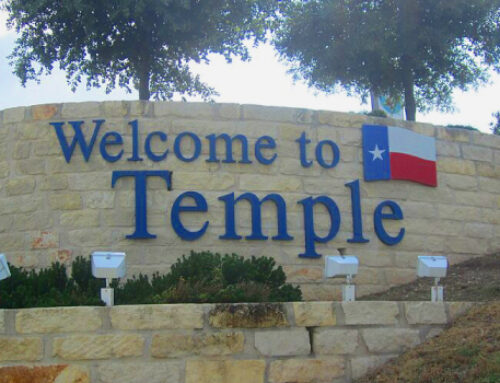How to Create and Solicit an RFP
Many community projects can become complicated quite quickly. Creating a request for proposal (RFP) can both help the HOA identify exactly what it wants from a project, as well as help the association find a vendor who can best deliver that. Here, we’ll briefly explain what an RFP is, break down how to create one, and provide tips for sending the RFP to vendors.
What Is an RFP?
A request for proposal, or RFP, is a document used to explain the desired project to vendors and request that they submit proposals detailing how they would complete the project if hired. The HOA reviews these proposals to choose the vendor that can best meet the association’s needs.
Creating the RFP
Depending on the complexity of the project and the resources available to the association, either the community manager, the board, or an ad hoc committee created specifically to handle the project should draft the RFP.
In any case, the first and most important step to writing an effective RFP is to clearly outline what the HOA wants from the project. The better the HOA is able to articulate what it needs, which may require research and speak with experts, the better the vendors will be able to address those needs in their proposals.
Generally, an RFP should include the following sections:
- Title & Contact Information
An RFP should have a clear title that identifies the communication as an RFP, states the HOA’s name, and says what it is looking for, such as “Request for Proposal: Fortune’s Glade HOA Clubhouse Accessibility Remodel.”
To make it easy to find, the association’s contact information, including the phone number and email address vendors should use to contact the association, as well as the address of the association, should be included at the top of the RFP.
- Project Statement & Goals
This introduction section briefly states what project the association wants to be completed and what it hopes to achieve and/or acquire by the time the work is done, such as a clubhouse that allows for easy wheelchair access and navigation.
- Project Description & Scope of Work
The detailed project description identifies the specifics of the project, as well as what jobs the vendor will be responsible for, such as adding a concrete wheelchair ramp with metal railing to the front of the clubhouse and installing a wheelchair accessible bathroom stall and sink to each restroom.
- Project Budget
The HOA can include the project budget in the RFP to prevent vendors from submitting proposals that cost more than the HOA can afford. However, before including the budget in an RFP, be sure to conduct research so that you can correctly estimate how much such a project typically costs. Presenting a budget that is far below the typical cost will result in either no responses or low-quality proposals, and a budget that is too high for a project may result in over-the-top or overpriced proposals.
If you have some flexibility in pricing, clearly identifying what the HOA is looking for in the project description, down to the dimensions and materials, will be the most help to vendors gauging the cost of the project.
- Evaluation Criteria
The criteria that will be used to evaluate the proposal submissions may include how well a proposal addresses the questions in the RFP, how expensive the vendor’s services are, how long it will take the vendor to complete the project, the company’s experience, and the quality of their past work, the vendor’s references and reviews, and whether or not the vendor has all required licenses, insurance policies, and certifications.
The HOA should clearly identify how they will judge incoming proposals so that vendors can better ensure that they address all necessary items.
- Project Timeline
In the timeline for the project, the HOA should include the date that proposals are due, the date that vendors will be notified of whether they were selected, the timeframe for negotiation with the winning vendor, the starting date for the project, the completion dates for different phases or aspects of the project, and the completion date for the project overall.
- Map & Directions to Work Site
If vendors will be required to visit the worksite to prepare their proposals, the RFP should include a map to the community that marks the specific location of the project. Written directions should also be included in this section.
- Submission Format & Content
The RFP also needs to include a description of how proposal submissions should be formatted. This description should explain both the content required to be included in the proposals, as well as the order of these items. For example, an RFP may request that proposals contain the following items in the order listed:
-
- The vendor’s background and experience
- The precise services and/or products the vendor will offer
- Estimated pricing for each aspect of the project
- Examples of the vendor’s work
- Three to five references from similar clients with similar projects
- Proof of insurance and required certifications and licenses
This section is typically where instructions for submitting proposals and the deadline for submitting proposals are included. The name of the point of contact for proposal submissions, such as the community manager, and the email address where proposals should be submitted would be listed.
Sending the RFP to Potential Vendors
The HOA should research vendors to identify good candidates before sending out the RFP. This will ensure that the HOA is not swamped with too many proposals to review and that the HOA doesn’t waste the time of vendors who are obviously poor fits for what the HOA is looking for.
As a best practice, each vendor should receive a specially crafted email with the RFP attached. The message should be polite, engaging, and enthusiastic. It takes time and effort to construct a proposal, so the HOA should show that they would be excited to read the vendor’s proposal, that they hand-picked the vendor for the chance to write a proposal, and that they will consider the vendor’s proposal seriously.
Your community manager can complete any necessary research on potential vendors if tasked with soliciting the RFP.
Related: Purpose of RFP
Now that we’ve covered the process of drafting an RFP from start to finish, you’ve probably noticed how like creating a job listing writing an RFP is. It’s just as crucial to pick an experienced, well-suited vendor for a high-stakes, expensive project as is it to pick the right team member for your association. A comprehensive RFP can help you identify which vendor is the one for your project. If you’re looking for a new community management company that can help you choose the right vendors for your projects, contact Spectrum today. We provide top-rated HOA management services in San Antonio, and across all of Texas, as well as throughout Arizona.







